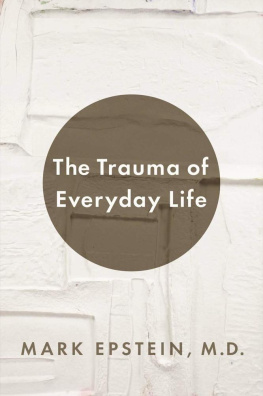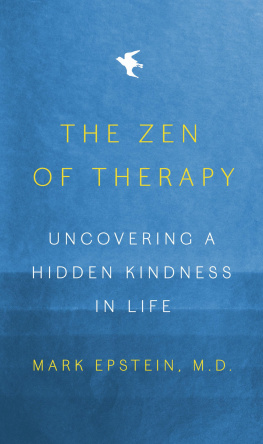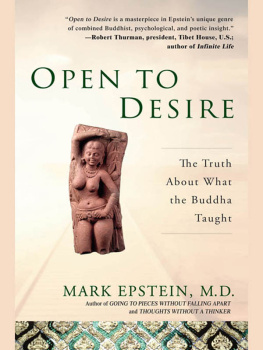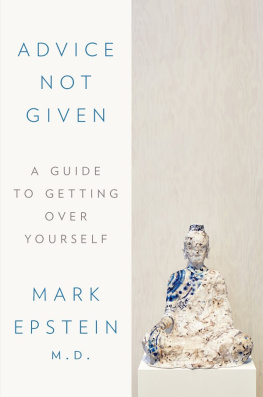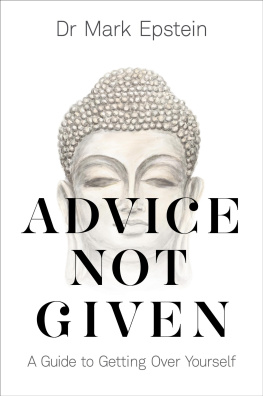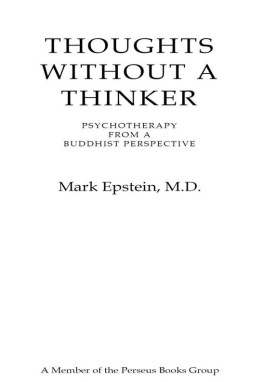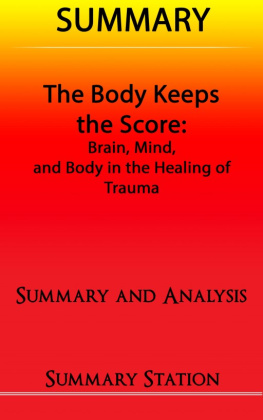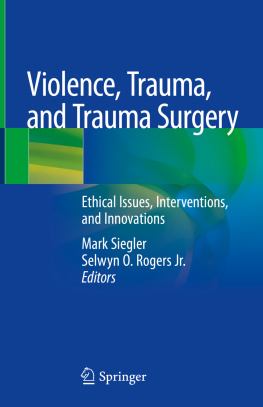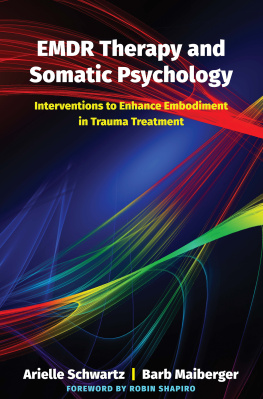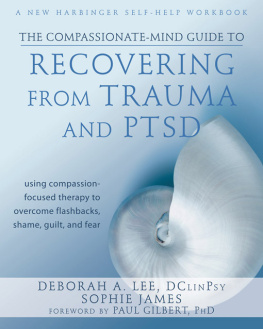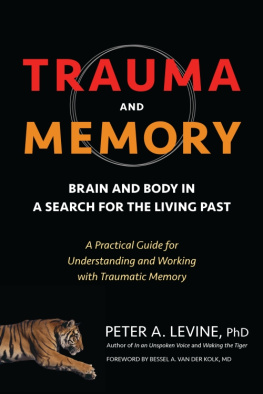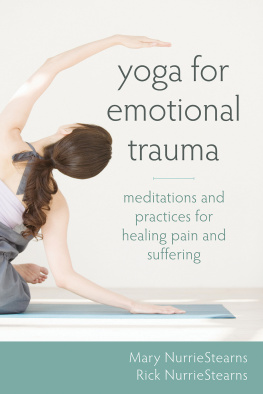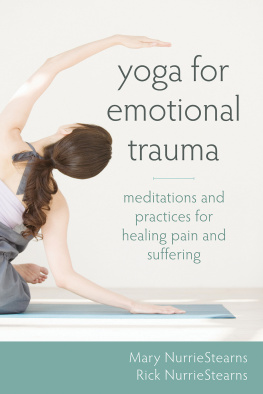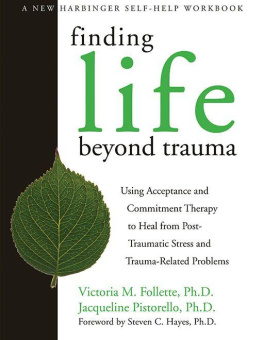A LSO BY M ARK E PSTEIN:
Thoughts without a Thinker: Psychotherapy from a Buddhist Perspective
Going to Pieces without Falling Apart: A Buddhist Perspective on Wholeness
Going on Being: Buddhism and the Way of Change
Open to Desire: The Truth About What the Buddha Taught
Psychotherapy without the Self: A Buddhist Perspective
THE PENGUIN PRESS
Published by the Penguin Group
Penguin Group (USA) Inc., 375 Hudson Street,
New York, New York 10014, USA
USA Canada UK Ireland Australia New Zealand India South Africa China
Penguin Books Ltd, Registered Offices: 80 Strand, London WC2R 0RL, England
For more information about the Penguin Group visit penguin.com
Copyright Mark Epstein, 2013
All rights reserved. No part of this book may be reproduced, scanned, or distributed in any printed or electronic form without permission. Please do not participate in or encourage piracy of copyrighted materials in violation of the authors rights. Purchase only authorized editions.
A portion of Chapter Six first appeared on the Goop website, January 13, 2010.
Grateful acknowledgment is made for permission to reprint the following copyrighted works:
Excerpt from The Notebooks of Malte Laurids Briggs by Rainer Maria Rilke, translated by Michael Hulse (Penguin Classics, 2009). Translation copyright Michael Hulse, 2009. Reprinted by permission of Penguin Books Ltd.
The Tree by D. W. Winnicott. By permission of The Marsh Agency Ltd on behalf of The Winnicott Trust.
Library of Congress Cataloging-in-Publication Data
Epstein, Mark, 1953
The trauma of everyday life / Mark Epstein, MD.
pages cm
Includes bibliographical references and index.
ISBN 978-1-101-62265-0
1. Psychic trauma. 2. Life change eventsPsychological aspects. 3. Stress (Psychology) 4. Interpersonal relations. I. Title.
RC552.T7E67 2013
616.85'21dc23
2013007698
AUTHORS NOTE
Except in the case of well-known figures introduced by first and last names, I have changed names and other identifying details or constructed composites in order to protect privacy.
To Arlene
Contents
Only one step, and my deep misery would be beatitude.
R AINER M ARIA R ILKE,
The Notebooks of Malte Laurids Brigge
The Way Out Is Through
F or the first ten years of my work as a psychiatrist, I did not think much about trauma. I was in my thirties, and many of the people I worked with were not much older than I was. In the first flush of my marriage, most of my efforts were directed toward helping my patients find and achieve the kind of love and intimacy they wanted and deserved. In retrospect, I should have been alerted to the ubiquity of trauma by the fact that three of the first patients I ever cared for were young women on an inpatient psychiatric ward who each attempted suicide after breaking up with their boyfriends. Their experiences were all similar. The stability and security they were counting on suddenly vanished. The earth moved and their worlds collapsed. While I helped them to recover, it took me many more years to understand that their reactions were far from unique. They were impulsive, young, vulnerable, and full of unrealistic expectations, but they were being forced to deal with an uncomfortable truth that we all have to face in one form or another. Trauma is an indivisible part of human existence. It takes many forms but spares no one.
Ten years into my therapy practice, three women in their early thirties came to see me within three months of one another. Each of their husbands had dropped dead. One left in the morning to ride his mountain bike and had a heart attack, one lay stricken on the tennis court, and one did not wake up in the morning. Each of these womens losses challenged my therapeutic approach. They had already found the love and intimacy I was endeavoring to help my patients achieve. They needed something else from me.
Around this same time, one of my long-term patients, a man about my own age, received a frightening diagnosis. He had a condition that threatened his life but that was known to have a highly variable course, discovered in a routine blood test. He might be severely sick soon, with a bone marrow cancer called multiple myeloma, or he might be fine for a long while. Only time, and careful monitoring, would tell. When he first told me, I reacted with genuine concern and barely disguised horror. He responded to my concern with alarm.
I dont need sympathy from you, he said. I can get that from other people. I need something different from you. This diagnosis is a fact, is it not? I cant treat it like a tragedy. Thats why Im coming to you. I know you understand that.
My patients comment brought me up short. I knew he was right. His condition was mirroring the breakups, losses, and deaths that had been knocking at my door. His query, This illness is a fact, is it not? rang in my ears. What could I offer him? Already deeply influenced by the philosophy and psychology of Buddhism, I turned to it again for help. What I found did not really surprise mein some sense I knew it alreadybut it helped me, and my patient, a great deal. In its most succinct form, it was what the Buddha called Realistic View. In the prescription for the end of suffering that he outlined in his Four Noble Truths, Realistic View held an important place. A critical component of what became known as the Noble Eightfold Path, Realistic View counseled that trauma, in any of its forms, is not a failure or a mistake. It is not something to be ashamed of, not a sign of weakness, and not a reflection of inner failing. It is simply a fact of life.
This attitude toward trauma is at the heart of the Buddhas teaching, although it is often overlooked in the rush to embrace the inner peace that his teachings also promised. But inner peace is actually predicated upon a realistic approach to the uncertainties and fears that pervade our lives. Western psychology often teaches that if we understand the cause of a given trauma we can move past it, returning to the steady state we imagine is normal. Many who are drawn to Eastern practices hope that they can achieve their own steady state. They use religious techniques to quiet their minds in the hope of rising above the intolerable feelings that life evokes. Both strategies, at their core, seek to escape from trauma, once and for all. But trauma is all pervasive. It does not go away. It continues to reassert itself as life unfolds. The Buddha taught that a realistic view makes all the difference. If one can treat trauma as a fact and not as a failing, one has the chance to learn from the inevitable slings and arrows that come ones way. Meditation makes profound use of this philosophy, but its utility is not limited to meditation. As my patient realized when grappling with his diagnosis, the traumas of everyday life, if they do not destroy us, become bearable, even illuminating, when we learn to relate to them differently.
When I first came upon the Buddhas teachings, I was young and not really thinking about illness or death. No one I knew had died, and I was struggling with my own issues of adolescence and young adulthood. Trauma, in the sense of confronting an actual or threatened death or serious injury (as the American Psychiatric Associations Diagnostic and Statistical Manual of Mental Disorders defines trauma), was not something I had to face directly. But there was another kind of trauma, developmental trauma, percolating under the surface of my experience. Developmental trauma occurs when emotional pain cannot find a relational home in which it can be held. In retrospect, I can see that this was the case for me. In my first encounters with Buddhism, I was trying to escape from emotional pain I did not really understand. But in order to practice the Buddhas teachings, I needed a realistic view. This meant accepting there was no escape. The most important spiritual experiences of my early exploration of Buddhism gave me such a view, although I have had to be reminded of it time and again as circumstances have evolved. This is what I remembered in response to my patients plea, however. What I learned in grappling with my own trauma was relevant in his struggle, too.

